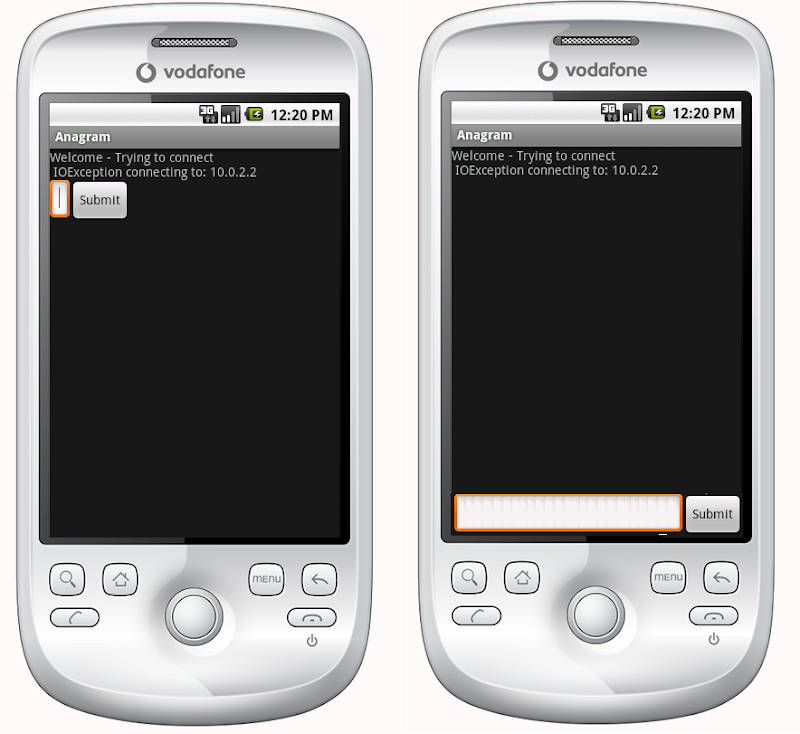Вот мой код компоновки;
<?xml version="1.0" encoding="utf-8"?>
<LinearLayout xmlns:android="http://schemas.android.com/apk/res/android"
android:orientation="vertical"
android:layout_width="fill_parent"
android:layout_height="fill_parent">
<TextView android:text="@string/welcome"
android:id="@+id/TextView"
android:layout_width="fill_parent"
android:layout_height="wrap_content">
</TextView>
<LinearLayout android:id="@+id/LinearLayout"
android:orientation="horizontal"
android:layout_width="wrap_content"
android:layout_height="wrap_content"
android:gravity="bottom">
<EditText android:id="@+id/EditText"
android:layout_width="fill_parent"
android:layout_height="wrap_content">
</EditText>
<Button android:text="@string/label_submit_button"
android:id="@+id/Button"
android:layout_width="wrap_content"
android:layout_height="wrap_content">
</Button>
</LinearLayout>
</LinearLayout>
То, как это выглядит, находится слева, а то, как я хочу, чтобы оно выглядело, было справа.

Очевидный ответ - установить TextView на fill_parent по высоте, но это не оставляет места для кнопки или поля ввода.По сути, проблема заключается в том, что я хочу, чтобы кнопка отправки и текстовая запись были фиксированной высоты внизу, а текстовое представление заполняло оставшееся пространство, аналогично в горизонтальном линейном макете я хочу, чтобы кнопка отправки обернула свое содержимое идля ввода текста, чтобы заполнить оставшееся пространство.
Если первый элемент в линейном макете сообщается fill_parent, он делает именно это, не оставляя места для других элементов, как мне получить элемент, которыйсначала в линейном макете, чтобы заполнить все пространство, кроме минимума, необходимого для остальных элементов макета?
РЕДАКТИРОВАТЬ:
Относительные макеты действительно были ответом - Спасибо!
<?xml version="1.0" encoding="utf-8"?>
<RelativeLayout
xmlns:android="http://schemas.android.com/apk/res/android"
android:layout_width="fill_parent"
android:layout_height="fill_parent">
<TextView
android:text="@string/welcome"
android:id="@+id/TextView"
android:layout_width="fill_parent"
android:layout_height="wrap_content"
android:layout_alignParentTop="true">
</TextView>
<RelativeLayout
android:id="@+id/InnerRelativeLayout"
android:layout_width="wrap_content"
android:layout_height="wrap_content"
android:layout_alignParentBottom="true" >
<Button
android:text="@string/label_submit_button"
android:id="@+id/Button"
android:layout_alignParentRight="true"
android:layout_width="wrap_content"
android:layout_height="wrap_content">
</Button>
<EditText
android:id="@+id/EditText"
android:layout_width="fill_parent"
android:layout_toLeftOf="@id/Button"
android:layout_height="wrap_content">
</EditText>
</RelativeLayout>
</RelativeLayout>